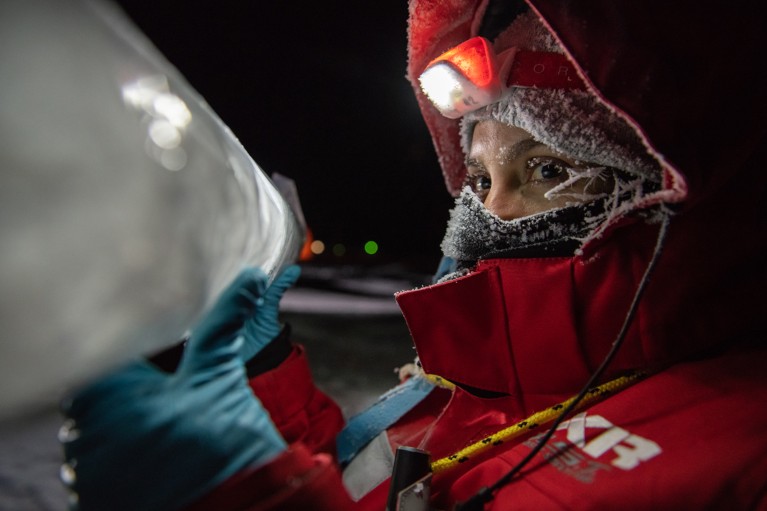Everything’s cold when you’re handling an Arctic Ocean ice core about 500 kilometres from the North Pole: your feet, your fingers, your face. The air temperature here can be as low as −35 °C. At that point, every part of me wants to go back inside the RV Polarstern — a German icebreaker and my research home — to take off my wet latex gloves and warm up.
I convince myself that I’ll be OK. Another researcher watches me closely for signs of frostbite, and I’m watching her too. A crew member keeps an eye out for polar bears. I summon my self-control and finish my work — measuring the ice’s temperature, salinity and methane concentrations. It’s all part of my PhD research on marine geochemistry at the Alfred Wegener Institute for Polar and Marine Research in Bremerhaven, Germany.
I spent from September to December 2019 on the Polarstern as part of an expedition called MOSAiC (Multidisciplinary drifting Observatory for the Study of Arctic Climate). This multinational project, running till September, is the first year-round expedition to explore climate in the far north — one of the largest uncharted areas in climate research. About 60 researchers and 40 crew members live on board at a time — a small community drifting along with the ice pack. This picture was taken in mid-afternoon on 10 November, well after the Sun had dropped below the horizon for the long polar night.
I’m from Chile, and I didn’t grow up around a lot of cold, snow and ice. But I’ve learnt to embrace it. During my free time, I would sometimes wrap up in heavy winter wear for short walks on the ice with some friends and a polar-bear guard. We were too far north to see the northern lights, but the ice glowed in starlight and moonlight. Sometimes we didn’t even need headlamps.
I feel lucky to be a part of this tremendous expedition. It’s an adventure. And I also have a lot of time to think. Time moves at a different speed on the ice.


 Alone where seals bark in the mist
Alone where seals bark in the mist
 Trapped: why 300 scientists are locking themselves in Arctic ice
Trapped: why 300 scientists are locking themselves in Arctic ice
 Polar research should include Indigenous perspectives
Polar research should include Indigenous perspectives







